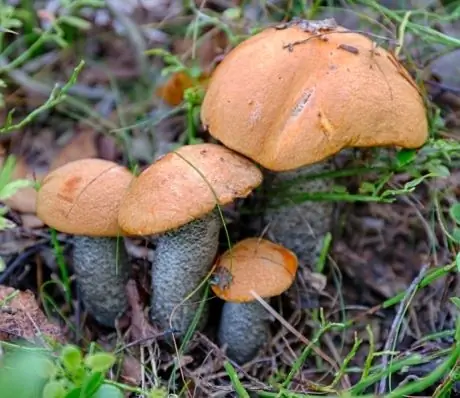- Author Rachel Wainwright [email protected].
- Public 2023-12-15 07:39.
- Last modified 2025-11-02 20:14.
Tarragon
Tarragon (Artemisia dracunculus) is a perennial herb of the Astrov family, reaching up to 120-150 cm in height with slender, bare, branched, yellowish-brown stems. Leaves are lanceolate, 2-8 cm long and 2-10 mm wide, green, glossy with whole edges. The flowers are small, round, 2-4 mm in diameter, yellow or greenish-yellow in color. Blooms in the second half of summer, the fruit is achene.
The ratio of BJU in the product

Source: depositphotos.com How to burn 25 kcal?
| Walking | 6 minutes |
| Jogging | 3 min. |
| Swimming | 2 minutes. |
| A bike | 4 minutes |
| Aerobics | 5 minutes. |
| Household chores | 8 minutes |
Presumably, the plant was brought to Europe from Mongolia and Siberia during the invasion of the Mongols in the 13th century. Tarragon came to England in the 15th century, and from there it was distributed to America. In Asia and Europe, tarragon is widely cultivated as a medicinal and spice plant. The most common tarragon varieties are French Tarragon, Russian and Transcaucasian.
In terms of chemical composition, tarragon (tarragon wormwood or Tarragon) consists of 0.25-1% essential oil, bitterness, resins, coumarins, herniarin, isocoumarin, vitamin C, flavonoids, sterols, hydrocarbons, tannins and protein. When consumed, the plant has a tonic effect, improves appetite and aids digestion.
Useful properties of tarragon
Fresh tarragon is a source of antioxidants, and scientific studies show that polyphenolic compounds in this herb can help lower blood glucose levels. The beneficial properties of tarragon include the phytonutrients that are part of it, which are necessary to maintain the body's immunity.
Laboratory studies of tarragon extract show that certain compounds in its composition inhibit the activation of platelets, which prevents their aggregation and adhesion to the walls of blood vessels, which in turn eliminates the formation of clots inside the tiny blood vessels of the heart and brain and is the prevention of heart attack and stroke.
The herb is a source of vitamins A, C and a complex of the group of B vitamins such as folates, pyridoxine, niacin and riboflavin, which function as cofactors in metabolism.
The beneficial properties of tarragon also include the presence of minerals such as calcium, manganese, iron, magnesium, copper, potassium and zinc. Manganese is used by the body as a cofactor for the antioxidant enzyme superoxide dismutase. Iron is essential for cellular respiration (a cofactor for cytochrome) and the formation of blood cells.
Tarragon use
The upper part of the plant is used to prepare tarragon-based medicines. The use of tarragon in medicine is effective in the treatment of toothache, premenstrual syndrome, nausea, urinary tract infections, digestive problems, poor appetite and insomnia, flatulence, hiccups, dyspepsia and anorexia.
Tarragon essential oil is used in dentistry as a local antiseptic and anesthetic for toothache.
According to the results of a study at Brigham Young University in the United States, it was proven that the use of tarragon is effective in cervical erosion and skin cancer.
In alternative medicine, tarragon is used for sealing the walls of blood vessels and other vascular disorders.
In the manufacturing industry, tarragon is used as a fragrance in the production of soaps and cosmetics.
The use of tarragon in cooking is especially common in France, where the plant is the main component of the Bearnaise sauce and is included in most recipes for cooking chicken, fish and egg dishes. Fresh, slightly crumpled tarragon sprigs are added to vinegar to produce spicy vinegar on tarragon, and the plant is also widely used for making salads, pickles and marinades.
In countries such as Azerbaijan, Armenia, Georgia and, as a result, Russia, Ukraine and Kazakhstan, tarragon is used to flavor the popular non-alcoholic drink Tarhun, which has a refreshing effect and is colored in bright green.
In Slovenia, the use of tarragon as a spice is necessary for the preparation of the traditional sweet cake Potica, and in Vegria, tarragon is used to season chicken soup.
Tarragon tea is an effective treatment for insomnia.

Contraindications
The use of tarragon in small quantities in food is absolutely safe and does not cause any complications in healthy people. However, long-term use of tarragon can lead to the formation of cancerous tumors, since it contains the organic substance methylchavicol.
Also, a contraindication to tarragon is an allergy to plants belonging to the Asteraceae family, such as chrysanthemums, marigolds, daisies and many others.
With gallstone disease, tarragon is contraindicated for use, since the plant has a choleretic effect that stimulates the release of stones from the gallbladder. In the presence of large gallstones, tarragon will facilitate their excretion, which will cause severe cramps and pain.
Pregnancy and lactation are contraindications to tarragon, as the thujone contained in the plant can cause milk loss and lead to termination of pregnancy.
YouTube video related to the article:
Found a mistake in the text? Select it and press Ctrl + Enter.






